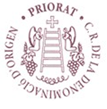About Wines
 The Priorat county is hidden behind the coastal mountains of southern Catalonia, 150 km southwest of Barcelona, 50 km. from the roman town of Tarragona and only 40 km. from the most famous beach resorts of Costa Daurada. Despite this, it is as remote from bustling city as could be possible.
The Priorat county is hidden behind the coastal mountains of southern Catalonia, 150 km southwest of Barcelona, 50 km. from the roman town of Tarragona and only 40 km. from the most famous beach resorts of Costa Daurada. Despite this, it is as remote from bustling city as could be possible.
This region sits in a natural amphitheatre of low mountains that surround it on all sides. The twenty-three towns that form the Priorat are all relatively small (less than 300 citizens) and quite close to each other, the principal one being Falset (2.500 citizens). The Priorat is one of the least densely populated areas in Catalonia.
It is a land with a wealth of character where the beautiful villages and landscape unite to captivate the visitor - a place of contrasts, soaked in calmness, with a countryside that hides its charms among vineyards, olives trees and mountains.
The Priorat is one of the oldest districts in Catalonia. The most notable historic site is the "Cartoixa d'Scala Dei", a monastery dating back to the 12th century. Soon after the Islamic domination, which ended in 1153, a group of Carthusian monks were sent here from France in order to establish their presence in Spain, being the oldest Carthusian monastery in the Iberian Peninsula.
The economy of the Priorat has always relied on agriculture and the production of wine and olive oil, making it an ideal location for wine tours. Here they have been exporting wine since the fifteenth century, and wine production remains its most important activity along with the production of olive oil.
The Priorat region has two 'DO' (Denominacion de Origen - names guaranteeing the area of origin) and the tradition associated with the cultivation of vines dates back to times immemorial. From its earliest days in the twelfth century, the monks of the Carthusian monastery at Scala Dei encouraged the cultivation of vines. By the eighteenth century, wine production had become an important feature of the region and after a century of silence, these land has become a route for those with a keen interest in wine being its wines appreciated all over the world since mid-nineties.
Due to its geographic position, this beautiful and unique area has an enormous potential for the production of distinctive great wines.
Whilst visiting the Priorat, the pleasure of discovering wine cellars can be combined with the enjoyment of tasting the wines that have been made there.
Starting from certain traditional varieties of grape, which after so many years have become closely identified with the region, new varieties have been added more recently, foreign in style and bearing exotic sounding names. Now, because of the professionalism and skill of specialist winemakers, wines have been created that have conquered the world markets. This is a unique land. Vineyards and wine cellars await you, where we hope to be able to share with you our great enthusiasm and love for the world of wine.
Although the Priorat wines have been produced for centuries, it is only recently, in the past decade or so, that these have taken a quantitative leap in quality that now puts them at the forefront of Spanish wines.
Catalonia is probably best known for its white wines and cava (champagne method), such as Freixenet and Codorniu which mostly emanate from the Penedes region near Barcelona, but the constant increase in production quality from DOQ Priorat wines and DO Montsant wines has put these in the spotlight of wine connoisseurs worldwide. This is what makes this area so interesting for a wine tour in Spain.
As we have already mentioned, the Priorat county has two wine denomination areas: DOQ Priorat and DO Montsant, being DOQ Priorat alongside with La Rioja, the only two qualified wine areas in Spain. Geographically the DO Montsant area has a donut shape and completely encircles the DO Priorat area. They both share the same grape varietals, almost the same climate, and the same sub-soil, however the DOC Priorat region has the hard black slate surface that the vines grow on and that is so characteristic of El Priorat.
With an area of cultivation equal to approximately 3,400 hectares, the region has many different types of soil, which produce a great variety of wines. This diversity of soil, together with the variation of altitude, (from 100 to 750 metres), and an unusual combination of climatic conditions, has allowed each of the denominations to produce different types of wine; red, white, rose, sweet wines and 'ranci'.
The main towns of DO Montsant production are Falset, Marca , Capcanes, El Masroig, Darmos, and Els Guiamets.The main areas of wine production in the DOC Priorat region are Gratallops, Scala Dei, La Vilella, La Morera de Montsant, Belmunt, Porrera, Poboleda, Torroja, and El Molar. Together they total nearly 400 wine cultivators and 100 wine producers.
One of the advantages of the Priorat region is its temperate and dry climate with hardly any rain whatsoever during the summer months. The geographical factor which affects both the price and taste of these wines is the fact that most vines are on steep slopes of slate of volcanic origin which confer a mineral character to the wines, and also preclude large automation of the picking process, thus making it a very manual affair. The most interesting wines of the area are the dry reds. These are very concentrated, very high in colour and alcohol content (14 to 15%), with great tannins, and are ready to drink at even a young age.
The grape varietals used for most wine production here are:
- Reds: Red Grenache, Carignan, Cabernet Sauvignon, Syrah and Merlot
- Whites: Macabeo, White Grenache and Pedro Ximénez
Apart from the reds and the whites, there is also a very particular wine made here called Vi Ranci, or "rancid wine" which is used as a dessert wine and in cooking. These are aged in barrels at a higher than normal temperature to allow fora natural oxidation process to take place. Another particular wine (although it doesn't follow a fermentation process) is Mistela, a sweet white wine also used to accompany desserts.

